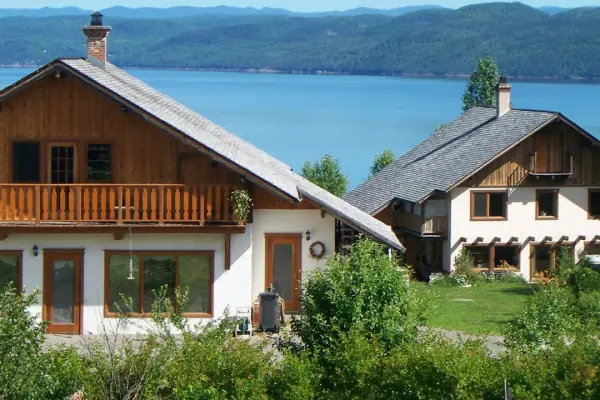Can tourism save a village? Ecotourism in Ukrainian villages proves it can! Ukraine's green estates attract thousands of tourists annually, creating new jobs for rural residents and giving hope to fading communities. In 2025, the development of rural tourism shows steady growth – revenues from recreational activities in national parks reached 12.4 million UAH in the first half of the year.
Rural tourism in Ukraine is experiencing a real boom. In practice, I often notice that urban residents are willing to pay a premium for an authentic experience in a Ukrainian village – a chance to connect with their roots, escape the urban hustle, and experience village life. Sustainable rural tourism practices in Europe show that integrating cultural heritage acts like a magnet for tourists.
"In one of our recent projects, we observed how a family from Lviv transformed an abandoned estate into a thriving ecotourism center. Over two seasons, the number of guests grew from 15 to 180 per year – a result that exceeded all expectations."
Real Success Stories: Ukrainian Rural Estates
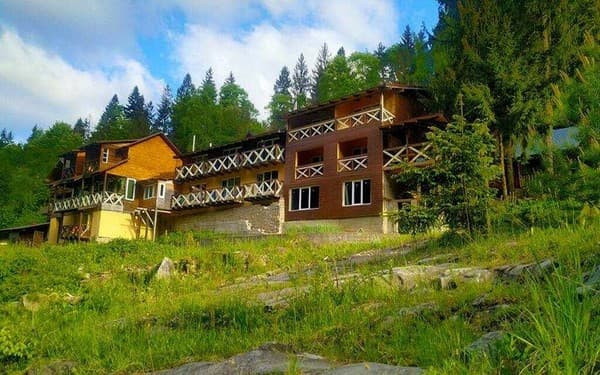 The "Zhiva Voda" estate is a vivid example of success. Located in Yaremche on the banks of the Prut River at 298 Svobody Street, it offers tourists an authentic experience with hot tubs and a Russian banya. Not just a place to stay – a full immersion in Carpathian culture.
The "Zhiva Voda" estate is a vivid example of success. Located in Yaremche on the banks of the Prut River at 298 Svobody Street, it offers tourists an authentic experience with hot tubs and a Russian banya. Not just a place to stay – a full immersion in Carpathian culture.
In the village of Sheshory in the Kosiv district, several private estates operate successfully, including "Lisovyi Budynochok" on Lesi Ukrainky Street. This Hutsul village, situated at 600 meters above sea level, stretches 9 km along the Pistynka River. Here, rural tourism facilities blend seamlessly into the natural landscape, and the Silver Waterfalls create a unique atmosphere for relaxation.
It’s worth noting that the "Bakota Bay Wetland" ecotrail has become a real breakthrough in educational tourism. This 500-meter wooden boardwalk with two viewing platforms attracted 17,000 visitors in a short time.
| Region | Popular Destinations | Notable Estates | Specialization |
|---|---|---|---|
| Zakarpattia | Yaremche, Volovets | "Zhiva Voda" | Mountain ecotourism, hot tubs |
| Ivano-Frankivsk Oblast | Sheshory, Kosiv | "Lisovyi Budynochok", "Carpathian Paradise" | Hutsul culture |
| Khmelnytskyi Oblast | Podilski Tovtry | Sokil private estates | Educational tourism |
| Kyiv Oblast | Yatsky, Synytsia | "Shchilyn" base, "Malyovnytsia" | Equestrian sports, fishing |
The data clearly demonstrate the geographic diversity of Ukrainian ecotourism. Studies on the economic impact of ecotourism confirm the multiplicative effect of each tourist dollar in the rural economy.
Interim Conclusion: successful examples prove the viability of Ukrainian ecotourism and its role in developing rural areas.
How Green Tourism in Villages Revives Communities
 The domino effect works flawlessly. Each green estate becomes a catalyst for neighboring households – when one farmer starts hosting tourists, others inevitably follow, creating entire tourism clusters in Ukrainian villages.
The domino effect works flawlessly. Each green estate becomes a catalyst for neighboring households – when one farmer starts hosting tourists, others inevitably follow, creating entire tourism clusters in Ukrainian villages.
"Over the past three years, six new estates have opened in our village. Young people have stopped leaving for cities – there’s work at home, there are prospects. Ecotourism has given us a second wind and faith in the future."
- Mariia Kovalenko, owner of the "Podolianka" estate
Agrotourism in Ukraine addresses several issues at once. Economically, it provides stable income for families. Culturally, it encourages the preservation of local Ukrainian culture and traditions.
It’s well-known that ethnographic tourism enriches villages with unique opportunities – from folk craft workshops to participation in agricultural activities, creating unforgettable experiences for urban dwellers.
Important: according to the Union of Green Tourism in Ukraine, the domino effect is particularly noticeable in western regions, where European support fosters the development of entire tourism clusters.
Business Models of Successful Rural Green Tourism Estates
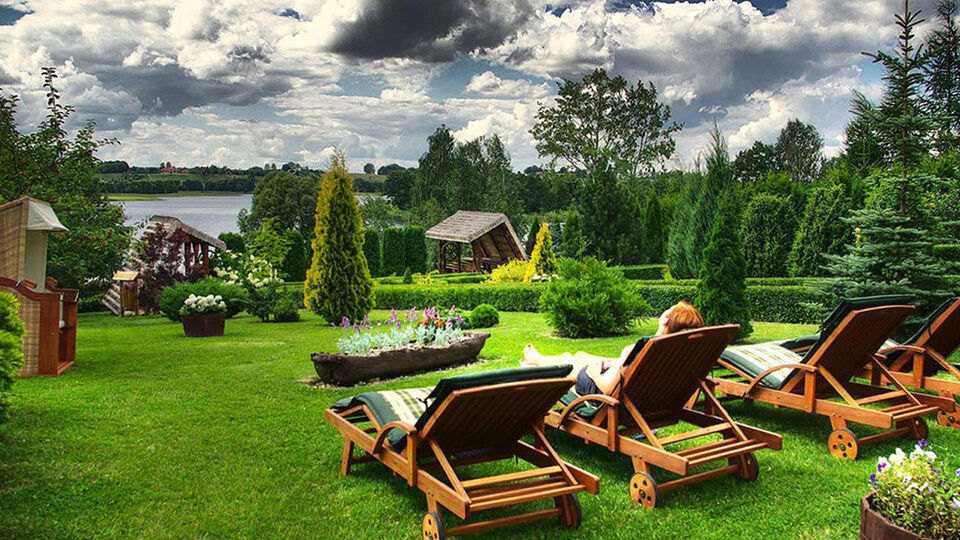 The variety of approaches is impressive. The "Shchilyn" recreation base in Yatsky village, Obukhiv district (Vasylkiv territorial community), offers Eastern exoticism amidst Ukrainian nature – guests stay in authentic Mongolian yurts, as if stepping into a parallel reality where the East meets Ukrainian traditions.
The variety of approaches is impressive. The "Shchilyn" recreation base in Yatsky village, Obukhiv district (Vasylkiv territorial community), offers Eastern exoticism amidst Ukrainian nature – guests stay in authentic Mongolian yurts, as if stepping into a parallel reality where the East meets Ukrainian traditions.
In working with private clients, family projects stand out. Nina Nesterova’s estate in Synytsia village, Kyiv Oblast, has become a true museum of folk life with a collection of antique towels and painted pottery. Visitors can ride ponies, try hippotherapy, or learn pottery.
"Our estate in Sheshory specializes in Hutsul culture. Tourists participate in weaving and woodcarving workshops, taste traditional cuisine. The average guest stays for 3-4 days – enough time to fully immerse in the Carpathian atmosphere."
Thus, successful Ukrainian rural estates invest 30-40% of their income in development. Renovations, landscaping, and equipment for workshops require constant investment but pay off with guest loyalty.
Practical Aspects of Rural Tourism Development: From Idea to Profit
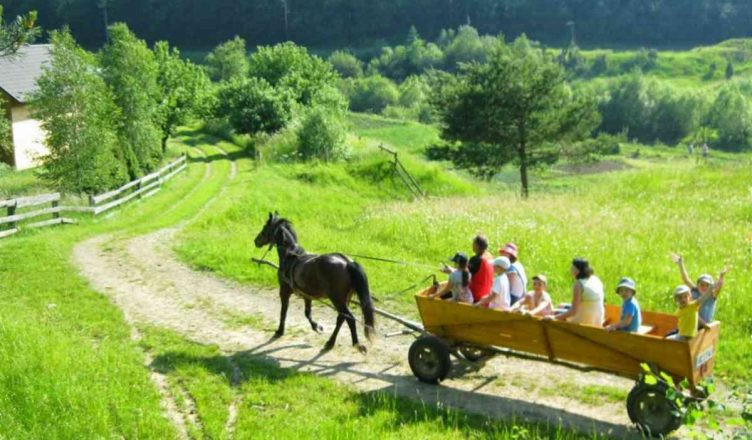 How much money is needed to start? Gastronomic tourism in villages offers unique monetization opportunities – tourists are willing to pay extra for homemade cheese, honey, herbal teas, and garden vegetables, creating additional revenue streams for entrepreneurs.
How much money is needed to start? Gastronomic tourism in villages offers unique monetization opportunities – tourists are willing to pay extra for homemade cheese, honey, herbal teas, and garden vegetables, creating additional revenue streams for entrepreneurs.
Payback of a Green Estate: Real Figures
According to industry experts, the average initial investment for setting up an estate for 10-15 guests ranges from $15,000 to $25,000. With an average occupancy rate of 40% during the season, such projects pay off in 3-4 years. In winter, successful estates shift to corporate retreats, folk craft workshops, and New Year programs.
Legal Framework: How to Legally Operate a Rural Estate in Ukraine
Under Ukrainian law, rural tourism activities require registration as a business entity, notification of local authorities, and compliance with sanitary regulations. Many regional programs offer simplified procedures for small businesses in rural tourism.
State Support and Prices for Rural Vacations
Ukrainian rural entrepreneurs can apply for support through regional rural development programs and European economic recovery initiatives. Grants range from 50,000 to 200,000 UAH depending on the region and project scale.
| Service | Seasonality | Target Audience | |
|---|---|---|---|
| Bread-baking workshop | Year-round | Families with children | Wood-fired oven |
| Honey tasting | May-September | All ages | Private apiary |
| Horseback riding | April-October | Youth, families | Experienced instructors |
| Guided fishing | March-November | Adults | Local water bodies |
These data highlight the variety of additional services in the business model of eco-estates. Key promotion channels include social media, tourism portals, word-of-mouth, and partnerships with tour operators offering rural tours.
"At one of our sites last season, we opened a small apiary for tourism purposes. Today, income from honey sales and tours accounts for a third of our total revenue – the investment paid off in one and a half seasons."
Industry Challenges: How to Book a Rural Estate Without Issues
 Challenges exist, and there are many. Given the structural peculiarities of Ukrainian infrastructure, the main issues are related to logistics – poor roads deter potential guests, and limited internet access complicates online booking.
Challenges exist, and there are many. Given the structural peculiarities of Ukrainian infrastructure, the main issues are related to logistics – poor roads deter potential guests, and limited internet access complicates online booking.
At one site in Poltava Oblast, owners teamed up with three neighboring estates to repair an access road. The joint investment of about 120,000 UAH increased visitor numbers by 35% – the cooperation paid off in one season.
Natural village landscapes often require minimal investment to create attractions. Old orchards become meditation zones. Ponds turn into fishing centers. Meadows become open-air yoga venues.
Practical Tip: Aspiring entrepreneurs should study the experience of neighboring estates and join regional green tourism associations for knowledge sharing and joint promotion.
Success Story: Ecotrail as a Catalyst for Development
"The Bakota Bay ecotrail showed how well-organized infrastructure minimizes environmental impact and creates jobs. In its first few months, 17,000 visitors brought significant income to the local community, and information boards with QR codes increased tourists’ environmental awareness – education through entertainment."
- Anna Petrenko, ecologist at Podilski Tovtry National Nature Park
The Future of Ukrainian Ecotourism: Where to Buy a Village Tour
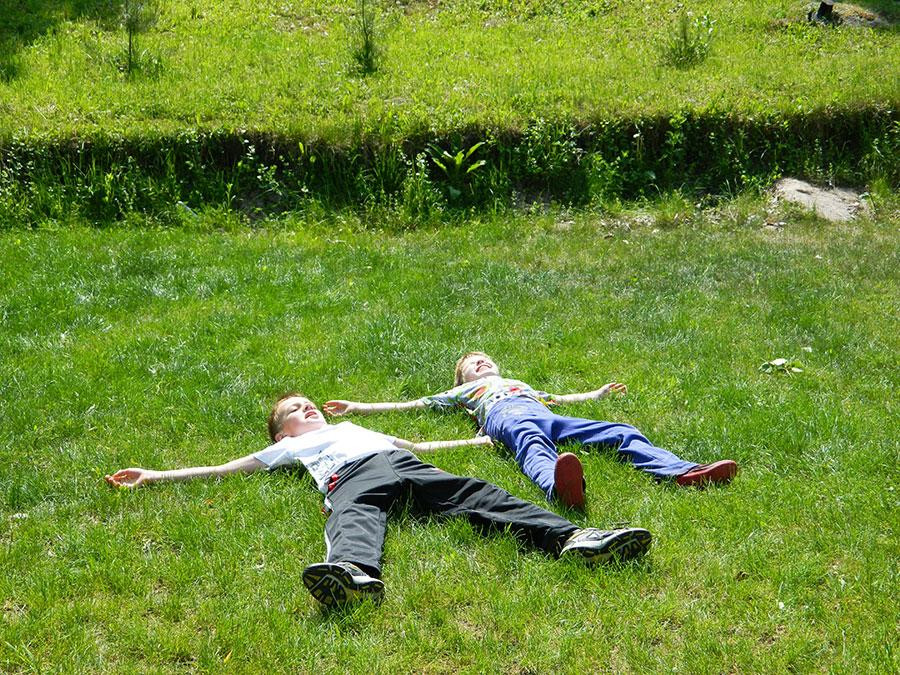 The trends are encouraging. Rural hospitality is becoming a hallmark of Ukrainian tourism, and international travel guides increasingly mention Ukrainian green estates as must-visit destinations for those seeking authentic experiences.
The trends are encouraging. Rural hospitality is becoming a hallmark of Ukrainian tourism, and international travel guides increasingly mention Ukrainian green estates as must-visit destinations for those seeking authentic experiences.
Digitalization is changing the game. Mobile booking apps, virtual tours, and online workshops expand the audience, making it possible to book a village vacation with a single click. However, human warmth, local Ukrainian culture, folk crafts, and traditions remain the main competitive advantages that no technology can replace.
"Technology helps us find guests, but the real magic happens in personal interactions. Tourists return not for comfort but for emotions and a connection to their roots – something that cannot be digitized."
Ecotourism in Ukrainian villages has evolved from an experiment into a powerful tool for economic revival. Ukraine’s green estates prove that saving rural communities is possible through a harmonious blend of tourism, ecology, and entrepreneurship. Successful examples like the Bakota Bay ecotrail, rural green tourism estates in the Carpathians, the development of folk crafts, and the preservation of local traditions inspire new generations of rural entrepreneurs. Ukrainian rural estates are becoming hubs for those who value authenticity, eco-friendly products, and the opportunity to connect with the roots of Ukrainian culture.
